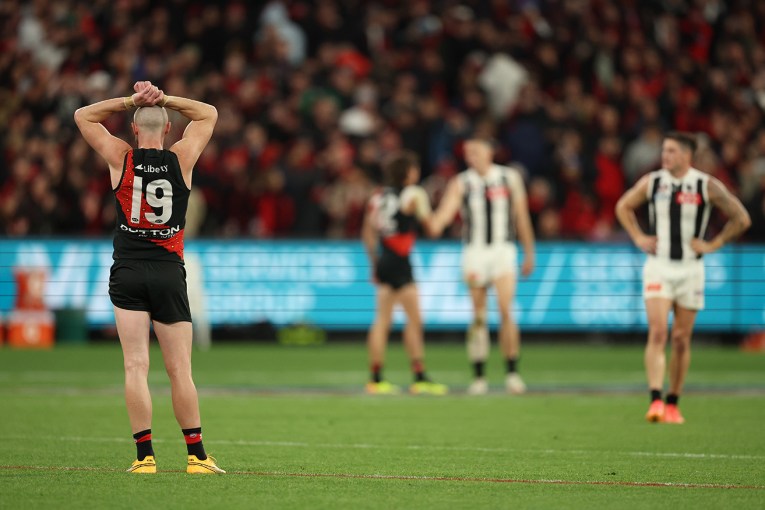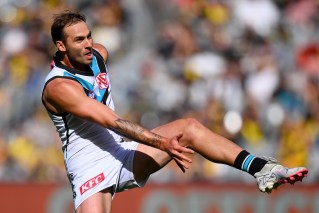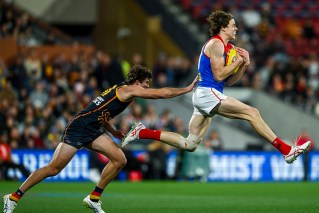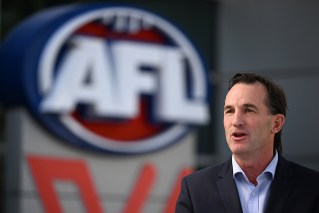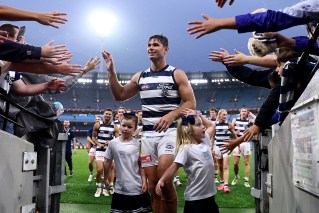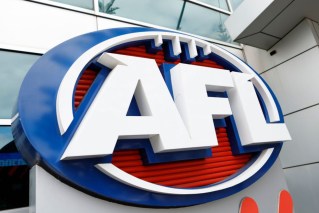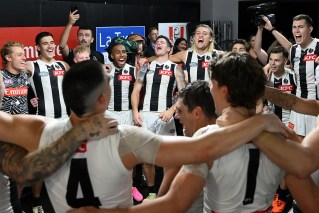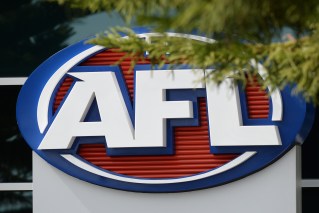How the Hawks built their Tasmanian fortress

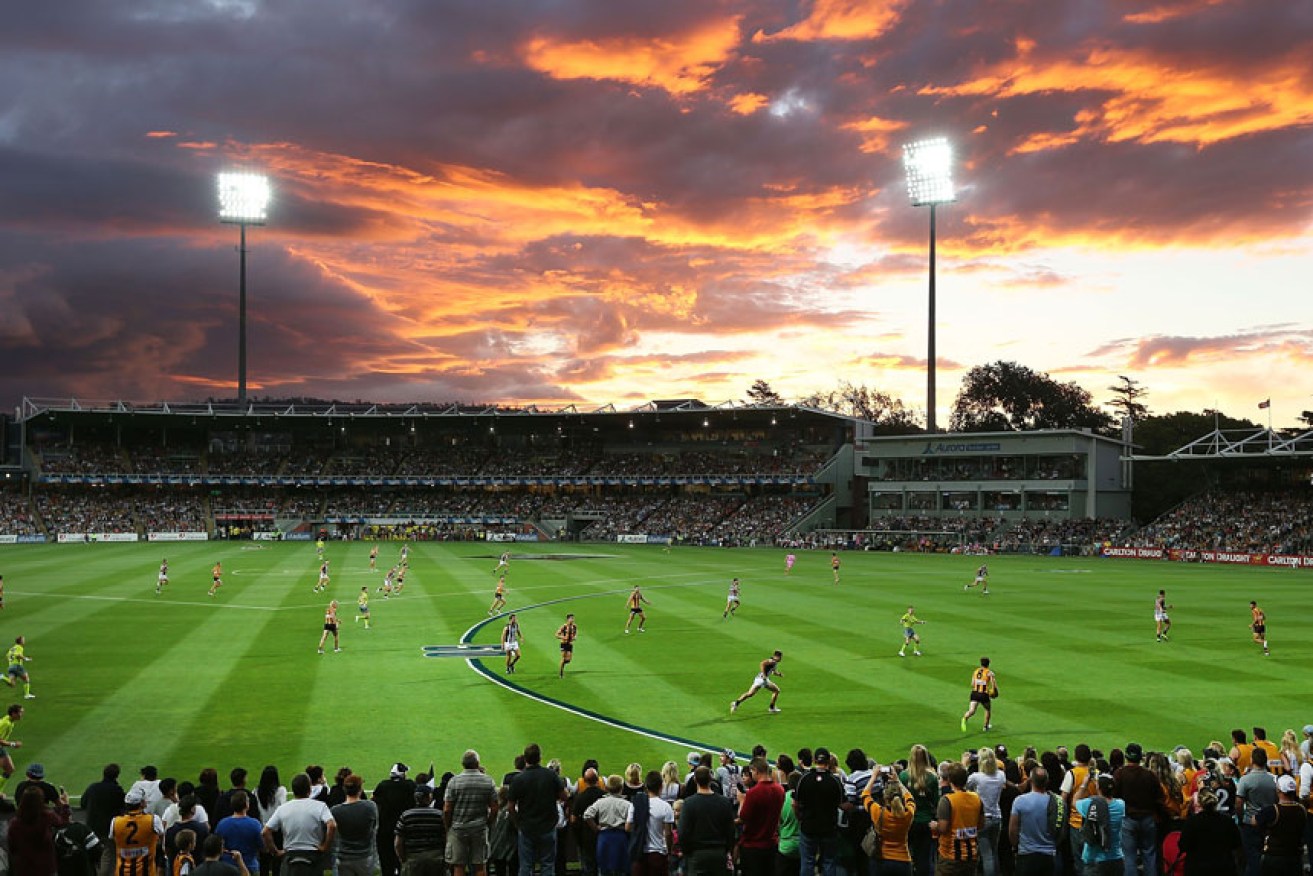
Getty
In 1996, Hawthorn lost $1.2 million.
The same year, a proposed merger with Melbourne was rejected by fans, who signed up in droves as members in 1997 to put Hawthorn back in the black.
But the profit was marginal – $311,000 to be exact – and something had to give.
• Americans watch AFL: the reactions are priceless
• Roughead recovering well, one test to go
• Grant Thomas: over coaching is ruining footy
“In 1997, we made up our mind that we would look at other alternatives for home games,” Ian Dicker – president of the Hawks from 1996 to 2005 – told The New Daily.
“When we played small clubs like Port Adelaide at the MCG, we lost money.
“We knew then that if we wanted to compete with the bigger clubs like Essendon and Carlton that we had to get more profitable.”
Tasmania – where the Hawks will host ladder-leaders Fremantle on Sunday – was not Hawthorn’s only option. Dicker said he was taken by the idea of playing games at Southport on the Gold Coast.

Ian Dicker and Brad Sewell enjoy a win. Photo: Getty
“They had over 100,000 members, a great ground, a lot of money and were quite keen to have us,” he said.
The Tasmania option gathered momentum in 2000, though, after more than 7,000 fans attended a practice match between the Hawks and Richmond in Devonport.
That crowd alerted Dicker to the move’s potential.
“Later that year, [then Premier of Tasmania] Jim Bacon rang me and asked if Hawthorn would be interested in Tasmania. He asked me to look at Hobart as a destination,” he said.
“So I looked into it, rang Jim back and said that we could move a game against the Bulldogs to Hobart. But he had changed his mind by then, and wanted us in Launceston.”
But Hawthorn were not the only club looking at the city as a potential destination for matches.
“St Kilda, North Melbourne and Hawthorn were all invited to Launceston at the same time. So, sitting in the stand, we could hear what each other was saying,” Dicker said.
“St Kilda [who would end up playing games in Launceston from 2003 to 2006] said they didn’t want to be there but that Lindsay Fox, who was good mates with Jim, said they had to come.
“North Melbourne then said they got $200,000 out of games in Sydney and if they could beat it, they would consider it. But I wanted to build the Hawthorn brand and get into the Tasmanian community to do so.
“Jim immediately said ‘You’re in’ and that was that.”
Despite having an agreement with the Tasmanian Government, the Hawks still needed AFL approval – something that was initially refused.

Former Tasmanian premier, the late Jim Bacon, was instrumental in bringing the Hawks to Tassie. Photo: AAP
“In the end, [then-AFL CEO] Wayne Jackson reluctantly agreed, but it was only for one game, for one year,” Dicker said.
More than 17,000 fans piled into York Park as Hawthorn beat Adelaide by 13 points on May 6, 2001 – the first AFL match in Tasmania since 1992.
And that success convinced League executives to give the Hawks the green light for more matches in Launceston, with two staged in the city from 2002 to 2005 and three in 2006.
The corporate benefit
Then, late in 2006, Hawthorn signed a $15 million deal with the Tasmanian Government over five years.
The agreement saw the Hawks commit to playing four AFL matches in Launceston each season. Also included was naming rights and for ‘Tasmania’ to feature on the front of Hawthorn’s jumper.
“When I finished as President in 2005, we were making about $1 million a year,” Dicker said.
“We had made nine profits in a row but were targeting making $4 million a year and were getting nowhere.
“But the Tasmania sponsorship deal in 2006 helped to turn the club around, there’s no doubt about that. It enabled Hawthorn to do a lot more things.”
The lucrative deal was later extended to cover seasons from 2012 to 2016, with discussions about a new agreement ongoing.
And while the arrangement between Hawthorn and Tasmania is not solely responsible for the club’s remarkable transformation – many of Dicker’s other moves, including a $1 purchase of Waverley Park as an administration and training base, have played a key role – it helped the club become a financial powerhouse.

Launceston has certainly been a happy hunting ground for Hawthorn. Photo: Getty
A home away from home
Hawthorn have an outstanding record in Launceston, winning 35 of their 46 matches.
And that record is even more ominous in recent years – the Hawks have won 13 in a row and 20 of their last 21 there.
Familiarity with the large playing surface and significant local support has seen Hawthorn develop a real ‘home ground’ advantage – something no Victorian club bar Geelong can boast – and Dicker said that was always the aim.
“We certainly have a home ground advantage in Launceston. Hawthorn have played on it, right from the start.
“We wanted to play the six interstate clubs down there and play two every season. That way, clubs would only play there once every three years and wouldn’t be used to it.
“Now, Hawthorn have nearly 9,000 Tasmanian members who give them great support. All the work we did in schools and hospitals across the state has paid dividends – the support plays a big part.”
The other side of the fence
While Tasmania has been undoubtedly good for Hawthorn, the benefits for the state – particularly Launceston – have been numerous.
Launceston Mayor Albert van Zetten told The New Daily: “A study by PriceWaterhouseCoopers indicated that Hawthorn playing matches in Launceston contributed $28m to the region’s economy.
“[That comes] at a time when job-creating economic activity is desperately needed here.
“Hawthorn has invested heavily in Tasmania and through a variety of programs, the club makes a real effort to stay in touch with Tasmanian fans.”
